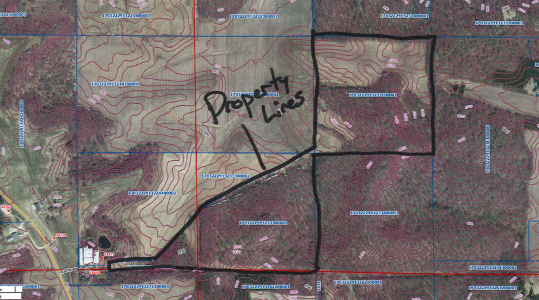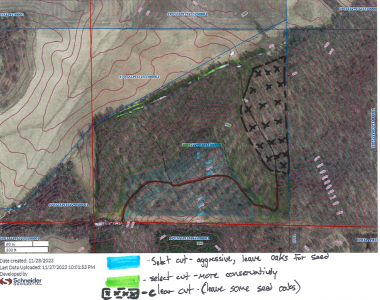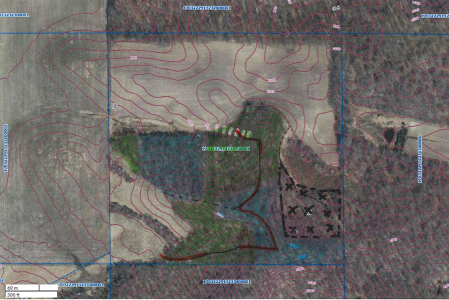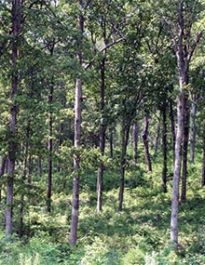westonwhitetail
5 year old buck +
I have 76 acres of which 55 or so acres is wooded. I am in the planning stages of having a timber harvest completed. The woods is currently mature and my goal is to thicken it up (some areas more than others) to encourage more bedding, browse and utilization of the property by deer. Currently I get a lot more use on the property in the summer and early fall, then the woods looses what little cover it has when the foliage drops and the deer seem to move to other areas that are thicker nearby. They still travel through but I want to develop more cover for better deer bedding and use in November/December.
I walked the property with the DNR forester and he had some recommendations. Those combined with my research has led me to the following plan.
1) aggressive cutting on the ridge tops and south facing slopes. Try to encourage oak regeneration.
2) select cut the north and east facing slopes. Maintain some timber value in these areas for future timber harvests
3) Clear cut some select areas for bedding and early successional growth
A map of the property and preliminary plan is below. Any suggestions on this plan and general recommendations when having a property logged?



I walked the property with the DNR forester and he had some recommendations. Those combined with my research has led me to the following plan.
1) aggressive cutting on the ridge tops and south facing slopes. Try to encourage oak regeneration.
2) select cut the north and east facing slopes. Maintain some timber value in these areas for future timber harvests
3) Clear cut some select areas for bedding and early successional growth
A map of the property and preliminary plan is below. Any suggestions on this plan and general recommendations when having a property logged?




